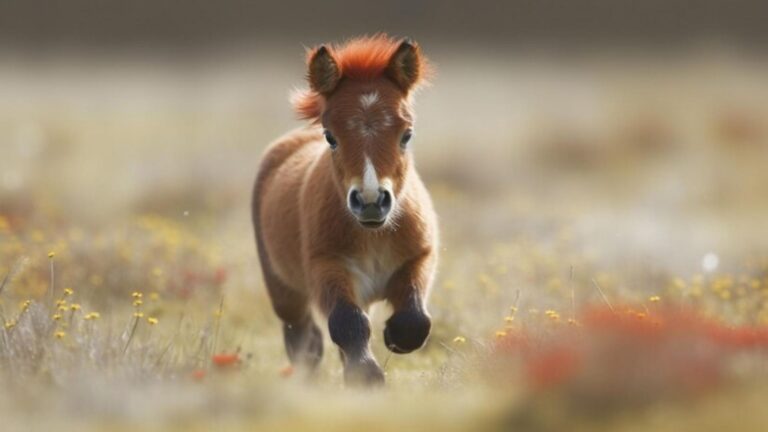Mini Stallion, often called mini stallions, are captivating creatures that have found a unique place in the hearts of animal lovers around the world. These pint-sized equines are not only adorable but also offer numerous benefits as pets, companions, and therapy animals. In this comprehensive article, we’ll explore everything you need to know about mini stallions, from their history and characteristics to their care and benefits.
History of Mini Stallions
Miniature horses have a rich history dating back to the 17th century. They were initially bred in Europe, primarily as pets for nobility. Over time, their small size and charming appearance made them popular worldwide. In the 19th century, mini stallions were introduced to the United States, where they gained further recognition.
Characteristics of Mini Stallions
Size and Appearance
Mini stallions typically stand no taller than 34-38 inches at the withers. Despite their small stature, they possess the same physical characteristics as larger horses, including a well-proportioned body, strong legs, and a flowing mane and tail. Their compact size makes them an excellent choice for those with limited space.
Temperament
Mini stallions are known for their gentle and friendly disposition. They are intelligent, curious, and highly trainable, making them suitable for a variety of roles, from pets to therapy animals. Their social nature means they thrive on interaction with humans and other animals.
Care and Maintenance
Diet
Feeding a mini stallion requires careful attention to their diet. They need a balanced diet of hay, grains, and fresh water. Due to their small size, overfeeding can lead to obesity, so it’s crucial to monitor their food intake and provide appropriate portions.
Grooming
Regular grooming is essential to maintain a mini stallion’s health and appearance. Brushing their coat, mane, and tail helps to prevent tangles and remove dirt. Additionally, regular hoof care and dental check-ups are necessary to ensure their overall well-being.
Shelter
Mini stallions require adequate shelter to protect them from extreme weather conditions. A well-ventilated barn or stable with ample space for movement is ideal. It’s also important to provide a safe and secure environment to prevent injuries.
Training and Socialization
Basic Training
Training a mini stallion involves teaching them basic commands such as walking on a lead, standing still, and responding to voice cues. Positive reinforcement techniques, such as treats and praise, work well with these intelligent animals.
Socialization
Socializing a mini stallion is crucial for their mental and emotional development. Regular interaction with humans and other animals helps them to develop trust and reduces anxiety. Socialization also plays a key role in preparing them for therapy work or public appearances.
Benefits of Owning a Mini Stallion
Companionship
Mini stallions make excellent companions due to their friendly and affectionate nature. They are loyal and form strong bonds with their owners, providing emotional support and companionship.
Therapy Animals
Their calm demeanor and small size make mini stallions ideal therapy animals. They are used in various therapeutic settings, including hospitals, nursing homes, and schools, to provide comfort and joy to individuals of all ages.
Educational Purposes
Mini stallions are often used in educational programs to teach children about animal care, responsibility, and empathy. Their manageable size and gentle nature make them a perfect choice for interactive learning experiences.
Common Health Issues
Obesity
Due to their small size, mini stallions are prone to obesity if not properly managed. A balanced diet, regular exercise, and portion control are essential to prevent weight-related health issues.
Dental Problems
Miniature horses can develop dental problems, such as overgrown teeth, which can lead to difficulty eating and other health complications. Regular dental check-ups and maintenance are crucial to ensure their oral health.
Hoof Issues
Regular hoof care is vital to prevent common hoof problems, such as laminitis and thrush. Keeping their hooves clean and trimmed, along with providing appropriate footing, helps to maintain their hoof health.
Conclusion
Mini stallions are remarkable animals that bring joy, companionship, and numerous benefits to their owners. Their small size, gentle temperament, and versatility make them a popular choice for pet owners, therapy providers, and educators. By understanding their history, characteristics, care requirements, and health issues, you can ensure a happy and healthy life for your mini stallion.
Frequently Asked Questions (FAQs)
What is the average lifespan of a mini stallion?
Mini stallions typically live between 25 to 35 years, with proper care and management.
Can mini stallions be kept indoors?
While mini stallions can spend time indoors, they require regular outdoor exercise and space to roam for their physical and mental well-being.
Are mini stallions suitable for children?
Yes, mini stallions are generally safe and suitable for children, given their gentle nature. However, adult supervision is recommended to ensure the safety of both the child and the animal.
Do mini stallions require special medical care?
Mini stallions require regular veterinary care, including vaccinations, dental check-ups, and hoof maintenance, similar to larger horses.
How much space does a mini stallion need?
A mini stallion needs adequate space for exercise and movement. A small paddock or a spacious backyard can suffice, but they also need access to a shelter for protection from the elements.

